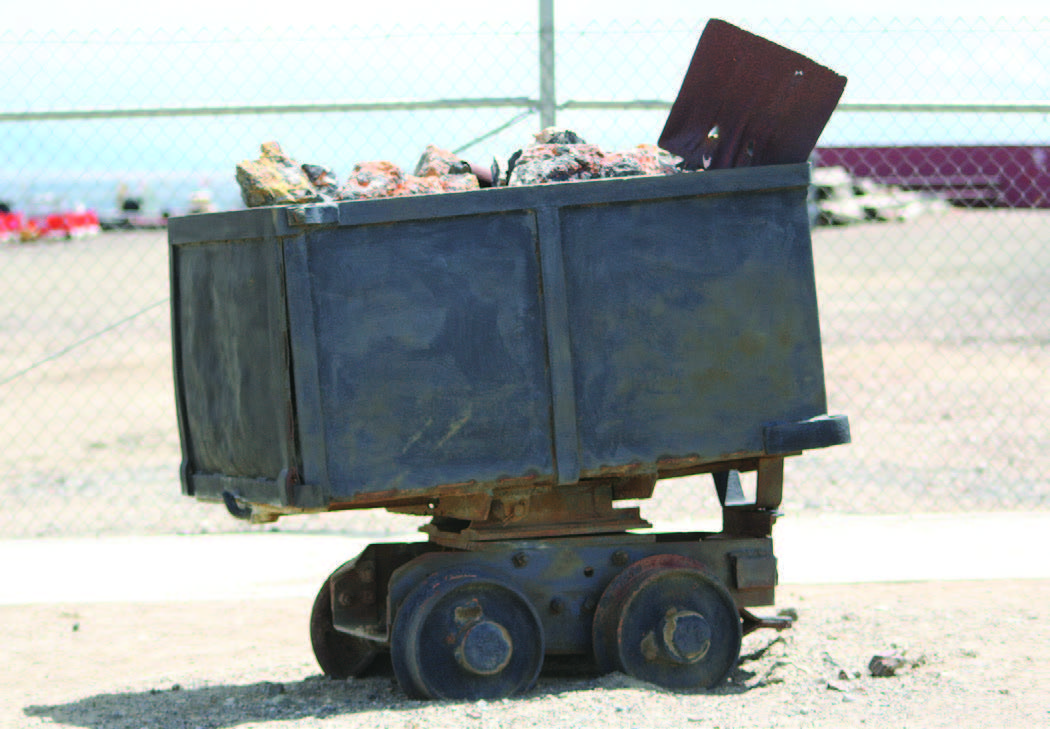Ancient Nevada: Part VI – Geology
November – December 2017
Ancient Nevada – Geology
Sixth of six-part series explores the geology of the Great Basin.
BY ERIC CACHINERO
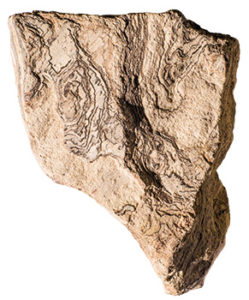 A fire raged some 15 million years ago that still glows to this day. Though the embers are now cool enough to hold in your hands, the colors are as bright as ever. During the time when it was lit, northwestern Nevada was a bubbling cauldron of volcanic viciousness. The eruption of these ancient atom bombs often destroyed the forests that surrounded them, and the resulting slurry of timber and ash settled in the clay bed of Nevada’s prehistoric lakes. As the lakes dried up, the woody debris decayed, leaving cavities indicative of their presence. After pressure, heat, and well- placed silica had their run at the cavities for millions of years, an opal was formed.
A fire raged some 15 million years ago that still glows to this day. Though the embers are now cool enough to hold in your hands, the colors are as bright as ever. During the time when it was lit, northwestern Nevada was a bubbling cauldron of volcanic viciousness. The eruption of these ancient atom bombs often destroyed the forests that surrounded them, and the resulting slurry of timber and ash settled in the clay bed of Nevada’s prehistoric lakes. As the lakes dried up, the woody debris decayed, leaving cavities indicative of their presence. After pressure, heat, and well- placed silica had their run at the cavities for millions of years, an opal was formed.
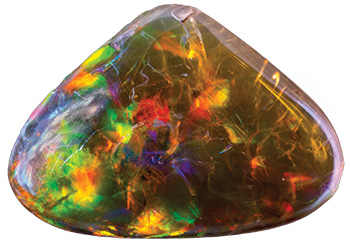 The Virgin Valley black fire opal’s burning colors are a reminder of the ancient forces that created it. Psychedelic fireworks of red, green, orange, and blue stand out against an inky black background. The process of creating them is nothing short of spectacular, though their formation is a grain of sand in the cosmos of construction that is Nevada’s geologic process—a process as old and precious as the Earth itself.
The Virgin Valley black fire opal’s burning colors are a reminder of the ancient forces that created it. Psychedelic fireworks of red, green, orange, and blue stand out against an inky black background. The process of creating them is nothing short of spectacular, though their formation is a grain of sand in the cosmos of construction that is Nevada’s geologic process—a process as old and precious as the Earth itself.
The state is renowned for its geologic diversity. Sandstone to siltstone, dolomite to diatomite, garnet to granite, countless lifetimes have been dedicated to cataloging these remnants of ancient processes. So if anyone tells you that Nevada’s geological history is boring, tell them to go kick rocks.
NEVADA ROCKS
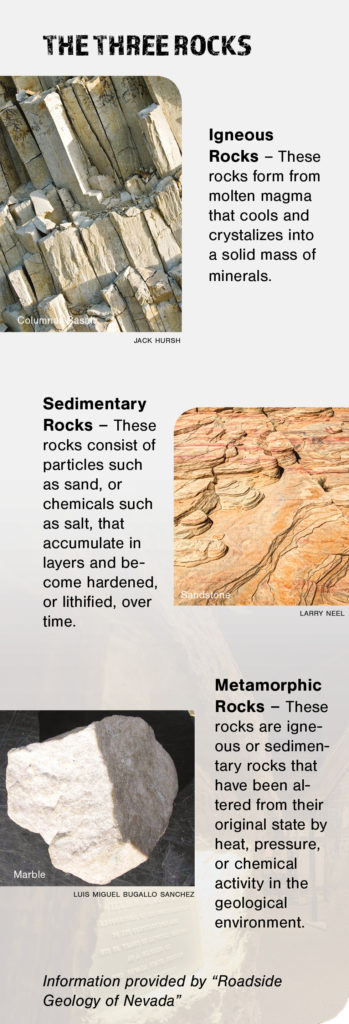 Geologic diversity may be putting it lightly. In the book “Roadside Geology of Nevada,” authors Frank DeCourten and Norma Biggar describe Nevada as a “geological paradise” in which, “Nearly every kind of rock known to geologists can be found somewhere… and some minerals occur nowhere else.” It is a story of igneous, sedimentary, and metamorphic magnificence (see sidebar on page 44) that covers the span of several billion years.
Geologic diversity may be putting it lightly. In the book “Roadside Geology of Nevada,” authors Frank DeCourten and Norma Biggar describe Nevada as a “geological paradise” in which, “Nearly every kind of rock known to geologists can be found somewhere… and some minerals occur nowhere else.” It is a story of igneous, sedimentary, and metamorphic magnificence (see sidebar on page 44) that covers the span of several billion years.
Many rock formations in Nevada are the result of volcanic activity, and the igneous rock formations display clues to their molten materialization. Extrusive igneous rocks—those that were formed by quickly cooling magma above the Earth’s surface—include everything from basalt and rhyolite to obsidian and pumice. Intrusive igneous rocks— those formed below the surface—sometimes display large crystals. Examples include granite and quartz.
Sedimentary rocks—those consisting of accumulated layers of particles or chemicals—often have much different characteristics. The vibrant sandstone formations of Valley of Fire, for example, are sedimentary rocks, resulting from great shifting sand dunes that existed 150 million years ago during the Mesozoic Era. The dunes mixed with minerals and underwent millions of years of pressure, complex uplifting, faulting, and erosion resulting in the spectacular formations we enjoy today.
Metamorphic rocks—igneous or sedimentary rocks that have undergone heat, pressure, or chemical pressure that has altered their original state—are abundant. Quartzite—a hard, grainy, and often sandpapery metamorphic rock—is formed when quartz sandstone (a sedimentary rock) is heated, often by tectonic pressure. Other metamorphic rocks include marble, schist, and banded gneiss.
NEVADA METALS
Beyond its ocean of different rocks, Nevada contains a wealth of precious metals and mineral resources. Generally, ore bodies of gold, silver, copper, and others are associated with igneous rocks. As often is the case, precious metals and magma mixed sandstone deep beneath the Earth’s crust before rising and being deposited on or near the surface. In other cases, magma-heated water fractured sedimentary rocks, depositing metals in veins.
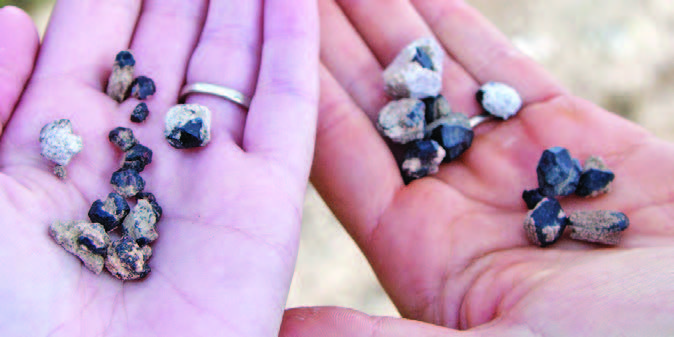 But not all precious metals are necessarily bound to igneous rocks. The Carlin Trend—one of the world’s richest gold mining districts, located just east of Elko—resulted from the collision of tectonic plates around 350 million years ago. The collision caused hot springs to form at the surface, which dispersed microscopic gold and silver mainly in clay and silt-suffused limestone. The metals in these areas tend to be in linear concentrations. There are several other productive trends in the area, including the Battle Mountain-Eureka Trend, Independence Trend, and Getchell Trend.
But not all precious metals are necessarily bound to igneous rocks. The Carlin Trend—one of the world’s richest gold mining districts, located just east of Elko—resulted from the collision of tectonic plates around 350 million years ago. The collision caused hot springs to form at the surface, which dispersed microscopic gold and silver mainly in clay and silt-suffused limestone. The metals in these areas tend to be in linear concentrations. There are several other productive trends in the area, including the Battle Mountain-Eureka Trend, Independence Trend, and Getchell Trend.
Nevada is the nation’s leading producer of lithium, an alkali metal that is found deep beneath the state’s dry lakebeds. It’s believed that the lithium was deposited there during the Tertiary period, several tens of millions of years go. Lithium-rich brine is pumped to the surface and allowed to dry, resulting in lithium carbonate. Once the material has been processed, it is used primarily in batteries and industrial applications, including heat-resistant glass and grease lubricants.
NEVADA GEMSTONES
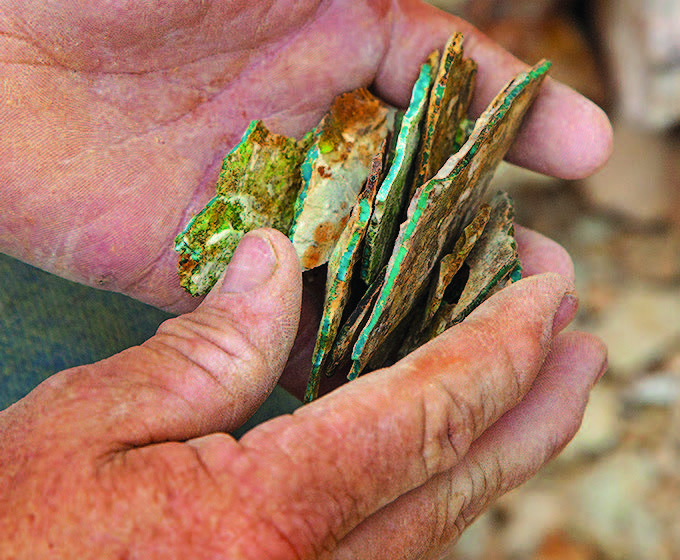 CuAl6(PO4)4(OH)8 • 4H2O sure is beautiful, don’t you agree? Though the chemical formula makes perfect sense to geologists and chemists, most of us know the state’s official semi-precious gemstone better as turquoise. The autological mineral is abundant in many different shades, hues, and shapes in Nevada, with the state ranking as one of the top producers in the U.S. Turquoise is not a primary mineral, meaning it did not form deep in the earth. Instead, turquoise relies on nature’s chemistry cookbook. It can be created by several means, but typically is the result of materials (copper, aluminum, and phosphorus) leaching from other sources (chalcopyrite, feldspar, and apatite, respectively) and combining. The outcome is the beautiful deep robin-egg blue (sometimes light blue or even white) that has been treasured by humans since at least the times of ancient Egyptians.
CuAl6(PO4)4(OH)8 • 4H2O sure is beautiful, don’t you agree? Though the chemical formula makes perfect sense to geologists and chemists, most of us know the state’s official semi-precious gemstone better as turquoise. The autological mineral is abundant in many different shades, hues, and shapes in Nevada, with the state ranking as one of the top producers in the U.S. Turquoise is not a primary mineral, meaning it did not form deep in the earth. Instead, turquoise relies on nature’s chemistry cookbook. It can be created by several means, but typically is the result of materials (copper, aluminum, and phosphorus) leaching from other sources (chalcopyrite, feldspar, and apatite, respectively) and combining. The outcome is the beautiful deep robin-egg blue (sometimes light blue or even white) that has been treasured by humans since at least the times of ancient Egyptians.
The Virgin Valley black fire opal (Nevada’s state precious gemstone) is truly world-renowned, and the state has produced some incredible specimens. Both the largest polished and unpolished black opals in the Smithsonian Institution—named Black Peacock and the Roebling opal, respectively—came from Virgin Valley. Opalized teeth and bones of ancient land animals have also been uncovered in Virgin Valley, as have opalized fish and even an opalized snakehead.
Turquoise and opals aren’t the only gemstones to be found in the Silver State. Amateur rock hounds can unearth agate, garnet, Jasper, and a variety of others.
ANCIENT EVERYTHING
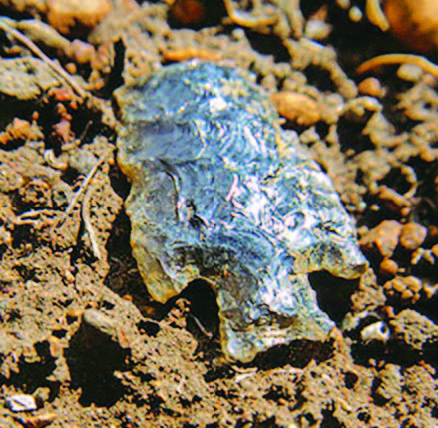 Oh to be a proverbial fly on the wall of ancient Nevada. A rock on the ground would probably tell a better story than a fly, Obsidian arrowheads epitomize this. Forged deep within the earth, the igneous rock was knapped by ancient civilizations, and used to hunt ancient animals on the shores of Nevada’s ancient lakes. A conversation with a personified piece of this volcanic glass could tell quite a story, for they’ve been here since the beginning, and will remain here till the end— likely to a time where everything that we know today will be considered another chapter in the saga of ancient Nevada.
Oh to be a proverbial fly on the wall of ancient Nevada. A rock on the ground would probably tell a better story than a fly, Obsidian arrowheads epitomize this. Forged deep within the earth, the igneous rock was knapped by ancient civilizations, and used to hunt ancient animals on the shores of Nevada’s ancient lakes. A conversation with a personified piece of this volcanic glass could tell quite a story, for they’ve been here since the beginning, and will remain here till the end— likely to a time where everything that we know today will be considered another chapter in the saga of ancient Nevada.

